Australia has some beautiful and unique Parrots and many of them can be found across the state of New South Wales. In the following text, you are going to discover 12 parrots in NSW, Australia’s largest state. You will learn where to find them and a whole lot more about their diet, behaviour, and the incredible sounds they make.
Let’s meet them…
1. Scarlet-chested Parrot

Size
This stunning bird measures between 19 and 21 cm (7.5-8.3 in.) long.
Colour
These birds were at the front of the line when colours were handed out!
The male Scarlet-chested Parrot has bright green upperparts, a blue face, cheeks and throat, and a scarlet patch on the chest. His wings are tipped with blue and his belly and the edges of his green tail feathers are yellow.
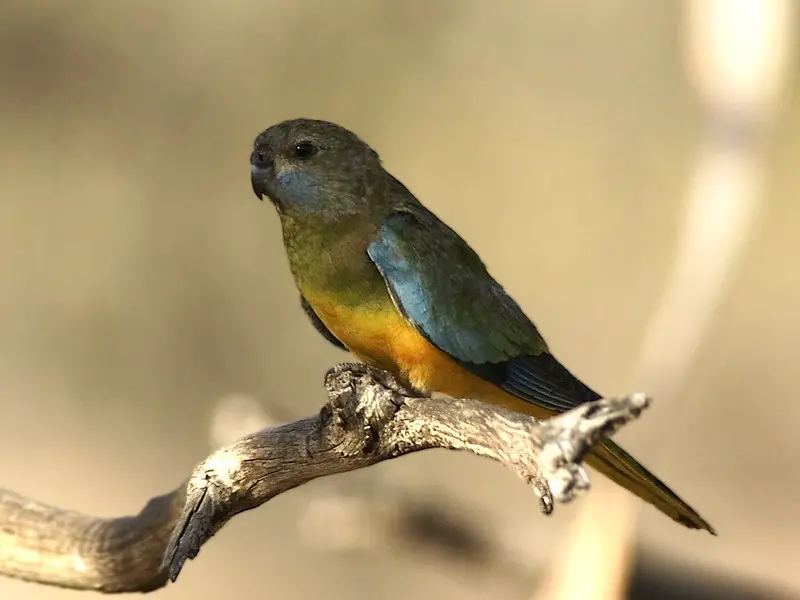
The female as seen in the image above is paler blue and has a green chest.
Discover some other Australian parrots in this article here on my blog.
Other Names
Scarlet-chested Parrots are also called the Scarlet-breasted Parrot, Orange-throated Parrot, or Splendid Parrot.
Where To Find Them
These parrots have been notoriously hard to pin down as they rarely occur in the same place for any length of time. They show up in a certain area and then suddenly disappear without a trace.

As you can see from the map above, you are lucky to see one of these parrots in NSW. They only occur in a couple of areas in the far west of the state, one north of Broken Hill and the other in the Murrumbidgee Valley.
Where To Look For Them
When searching for Scarlet-breasted Parrots, try looking in arid mallee-mulga scrubland with sporadic spinifex.
They seem to favour recently burnt areas and also like woodlands with Eucalyptus gongylocarpa or Casuarina cristata, ridges with vegetation, and open saltbush plains.
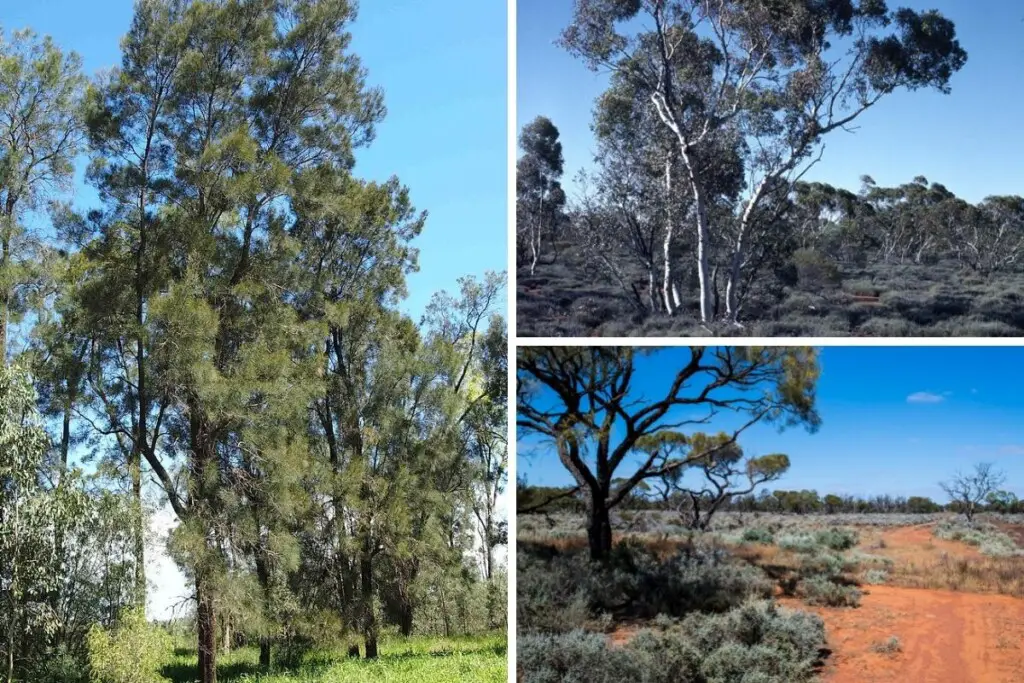
Eucalyptus gongylocarpa (R. Jackson, CC BY 3.0 AU https://creativecommons.org/licenses/by/3.0/au/deed.en, via Wikimedia Commons),
and Saltbush (image by Michael Perrott from Getty Images).
They feed on the ground or in low shrubs as they eat the seeds of grasses and other plants.
What Do They Sound Like?
Scarlet-Chested Parrots are not very vocal and I could not source a sound file for the calls of this bird.
I did come across a video on YouTube which shows a Scarlet-chested Parrot but it doesn’t seem to be making the sounds that are in the video. You can watch it here if you like.

Due to how rare it is to find these birds and the fact they do not stay in one place for very long, they are one of Australia’s most poorly understood parrot species.
2. Red-winged Parrot

Size
Red-winged Parrots are 30-32 cm (11.8-12.6 in.) in length.
Colour
These parrots are a beautiful lime-green on their head, belly and rump. Their wings are dark green with a red shoulder patch. The male birds are black on their backs and have a deep blue rump.
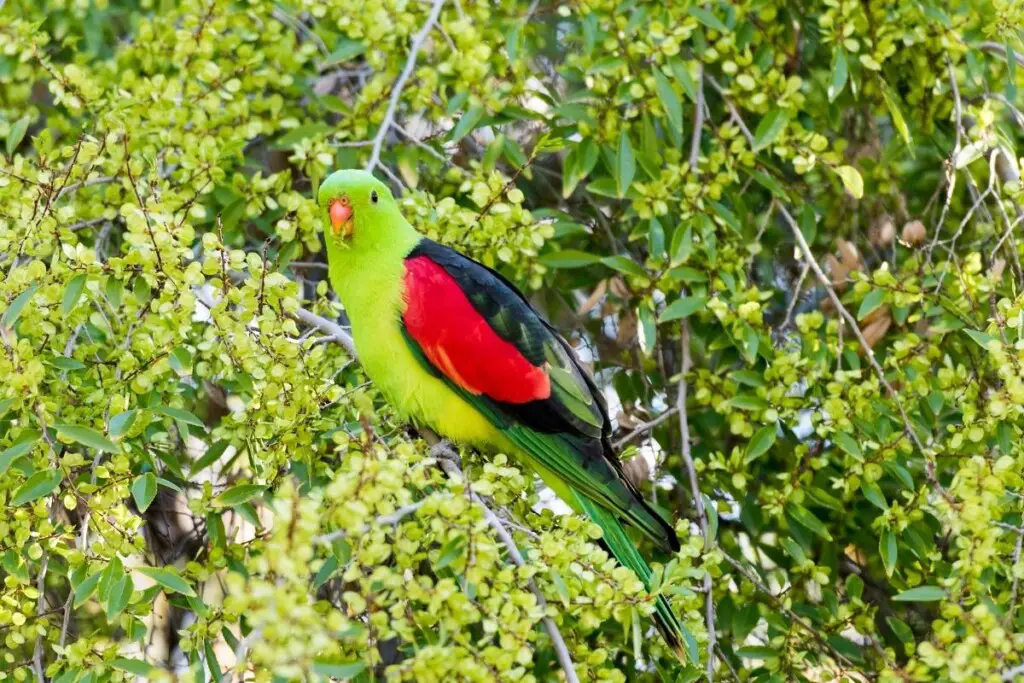
Other Names
These birds are often called Crimson-winged Parrots, Red-winged Lory, Red Wing, or King Parrot.
There is also a King Parrot that inhabits the east coast of Australia which looks completely different from the Red-winged Parrot.
Where To Find Them
Red-winged Parrots can be found mostly in the northeast of the state. A few sightings have been recorded in the northwest and in central NSW.
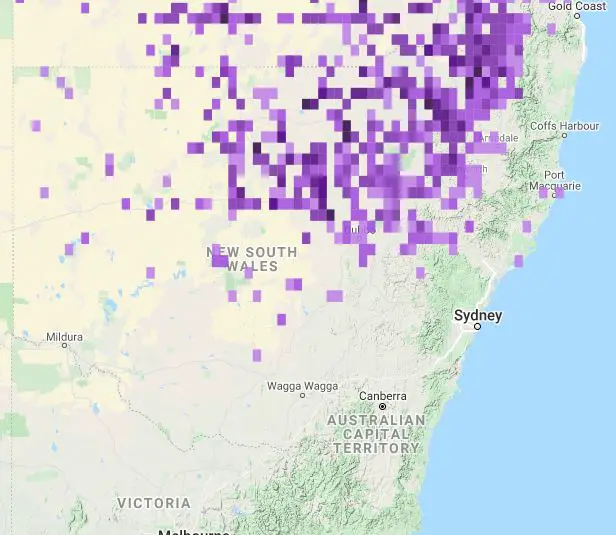
Where To Look For Them
Look for these birds in the outer branches of flowering trees and shrubs. They like to eat seeds, nectar, pollen, and flowers.
Occasionally you might find them on the ground getting a drink or eating seeds.
Meet 9 famous Aussie birds in this article.
What Do They Sound Like?
Listen to the Red-winged Parrot on Xeno-Canto:

Female Red-winged Parrots will lay their eggs at the bottom of a hollow tree trunk, close to the ground. This may help keep the eggs warmer. The entrance to the nest will be higher up the tree safe from predators.
3. Regent Parrot
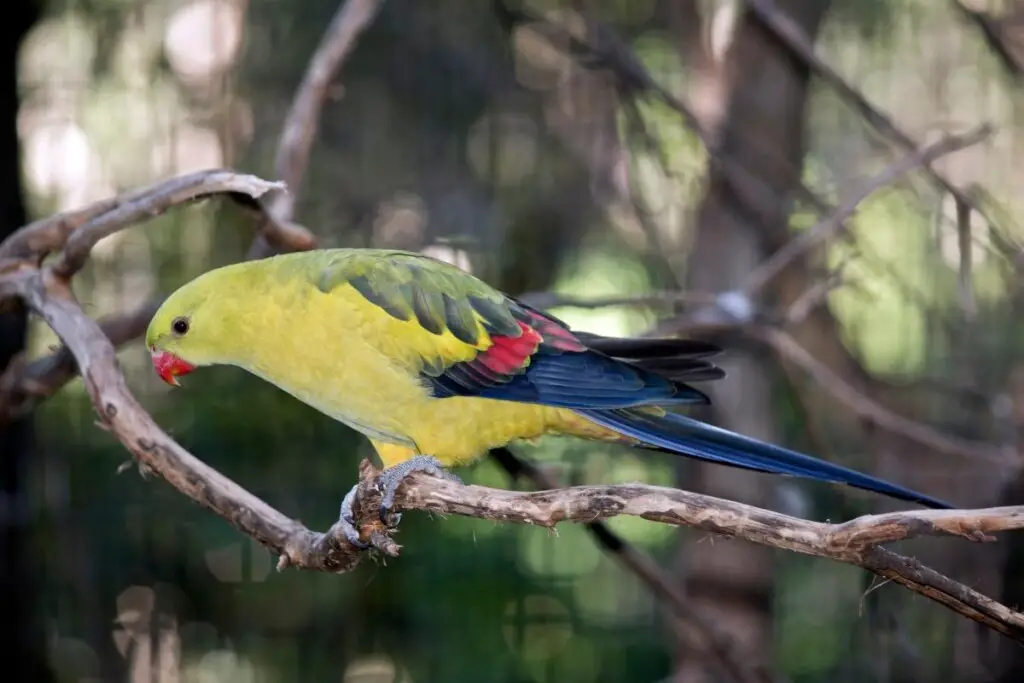
Size
The Regent Parrot is around 40 cm (15.7 in.) in length.
Colour
These really are stunning birds. They are mostly yellow with blue-black wings and tails. Males have bright red patches on their wings and a bright yellow shoulder patch.
Females are duller and olive green instead of yellow.
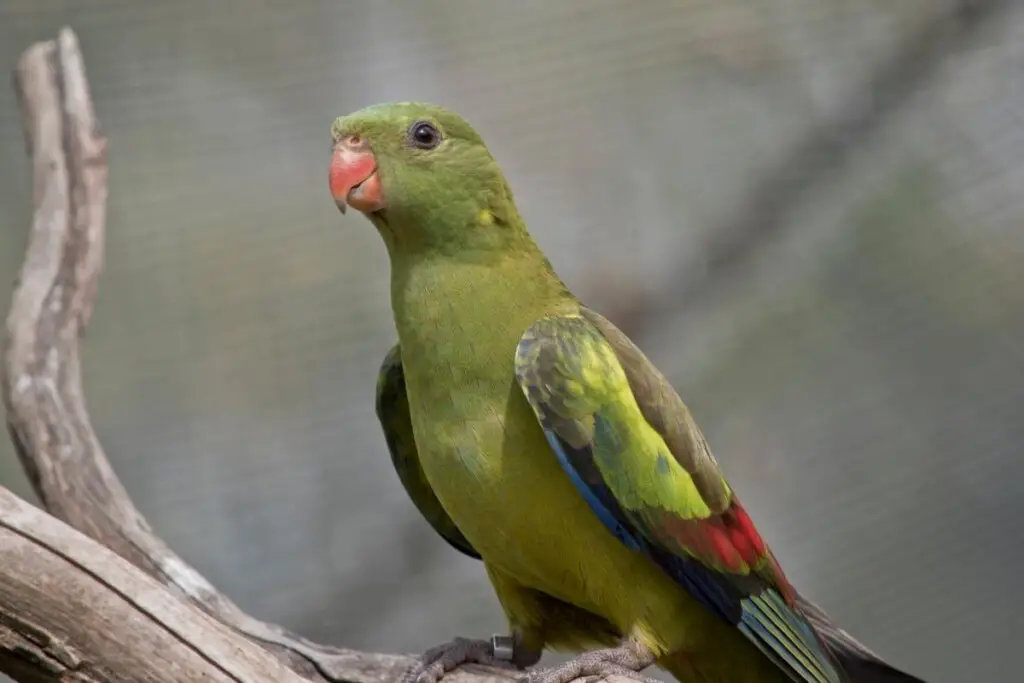
Other Names
Regent Parrots are also known as Black-tailed Parrots, Black-Throated Parrots, Marlock Parrots, or Smokers.
Where To Find Them
These beautiful birds can be found in the southwest of New South Wales. One place that has possibly the biggest population is Euston on the northern side of the Murry River, southeast of Mildura, Vic.
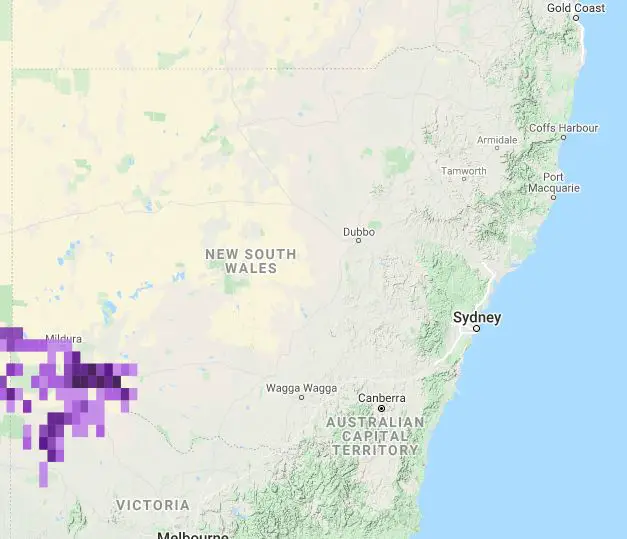
Where To Look For Them
Regent Parrots are ground foragers, so will likely be seen in pairs or small groups eating the seeds of grasses. They can also be seen high in the canopy of Salmon Gum or Wandoo where they will also nest.
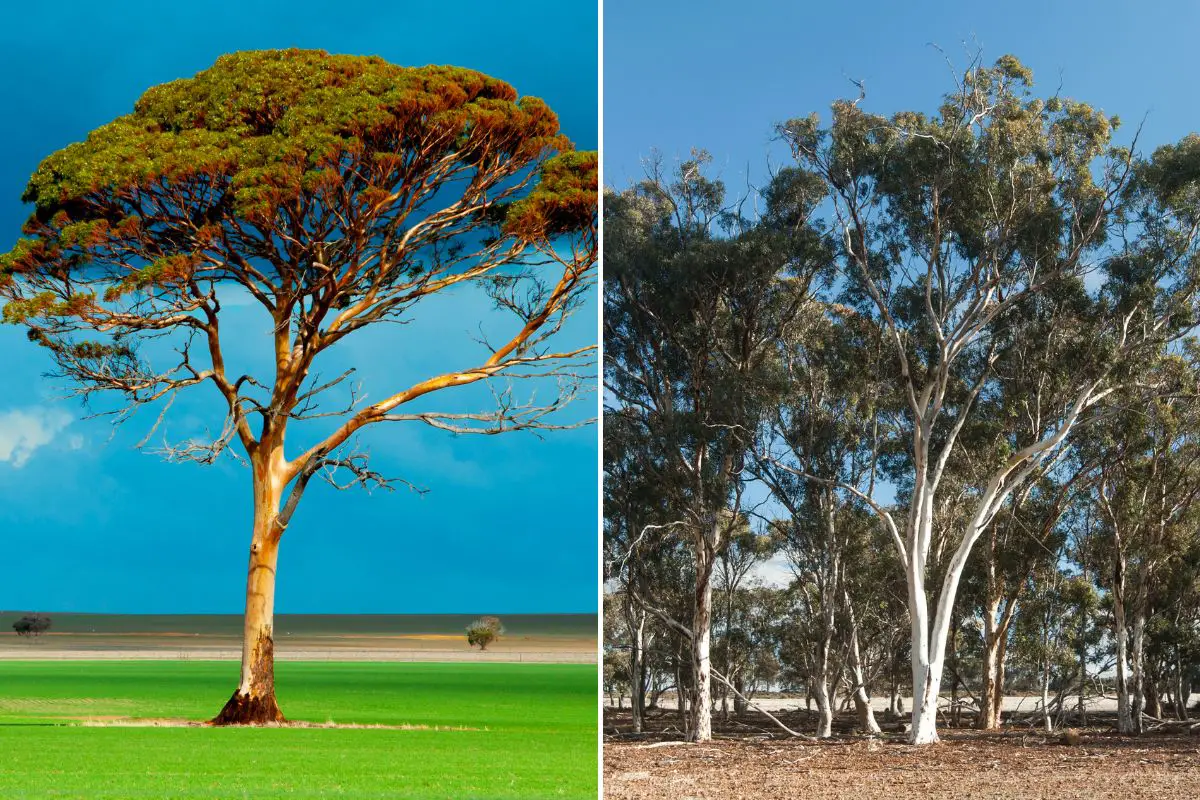
What Do They Sound Like?
Listen to the Regent Parrot on Xeno-Canto:

Duxton Vineyards in Euston are heavily involved in the Saving Our Species program, revegetating parts of their property to provide much need habitat for the Regent Parrot.
4. Red-rumped Parrot
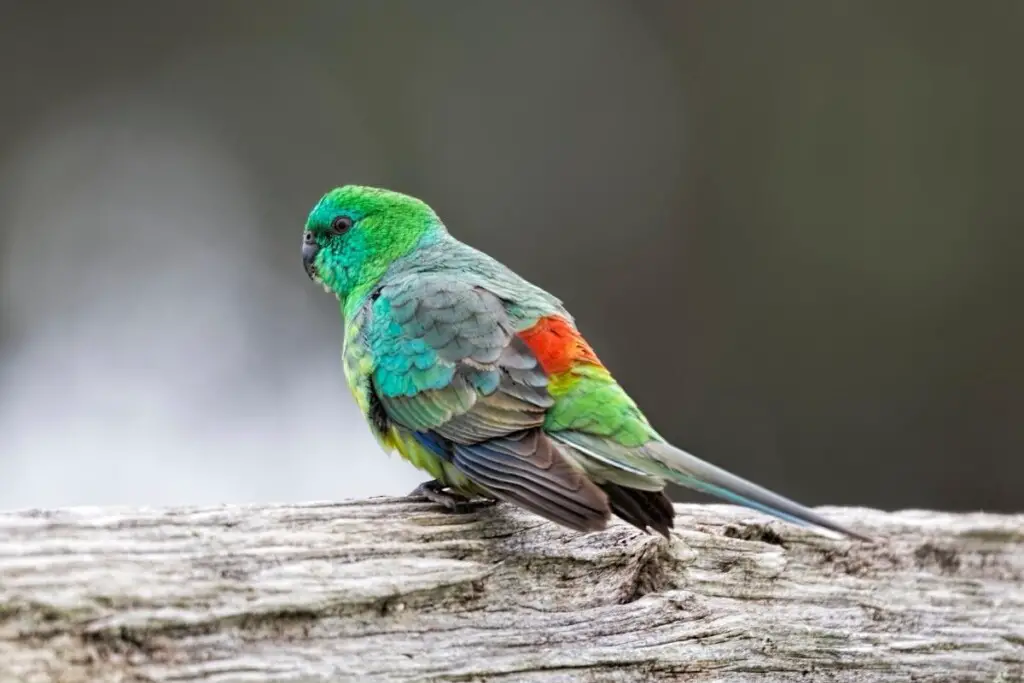
Where can you see stunning birds of paradise in Australia? Find out here.
Size
The Red-rumped Parrot is around 27 cm (10.6 in.) long.
Colour
Male red-rumped parrots are bright green with blue-green heads, yellow shoulders and belly, and a red rump (naturally!).
The female birds are a duller olive green, with yellow or light green scales on their bellies, and green rumps.
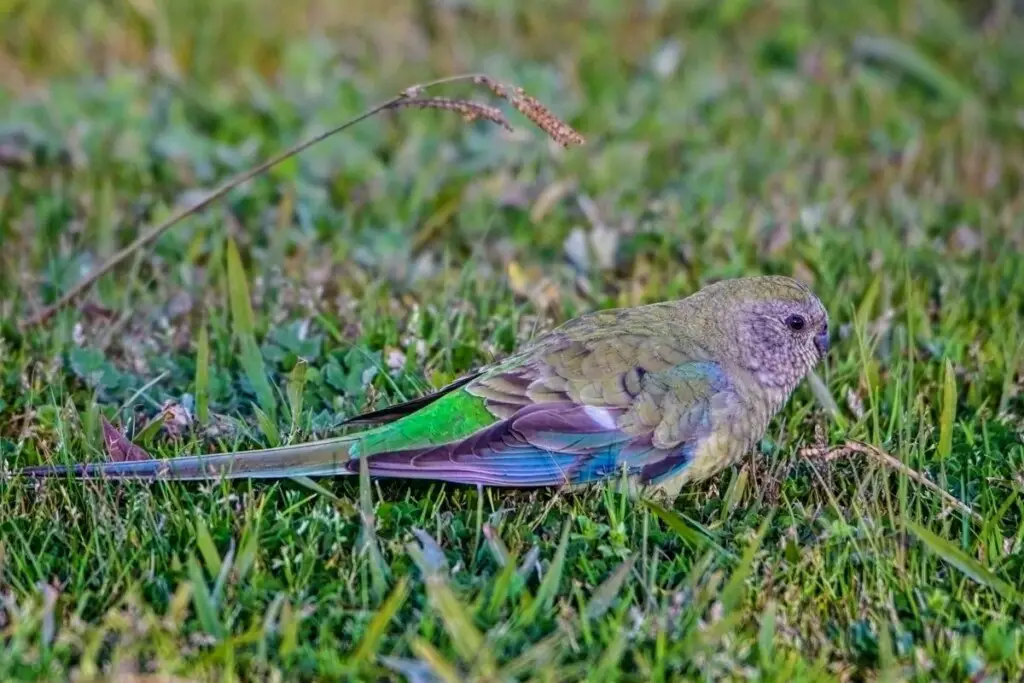
Where To Find Them
As you can see in the map below, Red-rumped Parrots are quite widespread across eastern and southwestern New South Wales. They are mostly found inland but can be seen on the coast near Sydney and a few other spots.
They can regularly be seen in urban parks and gardens.
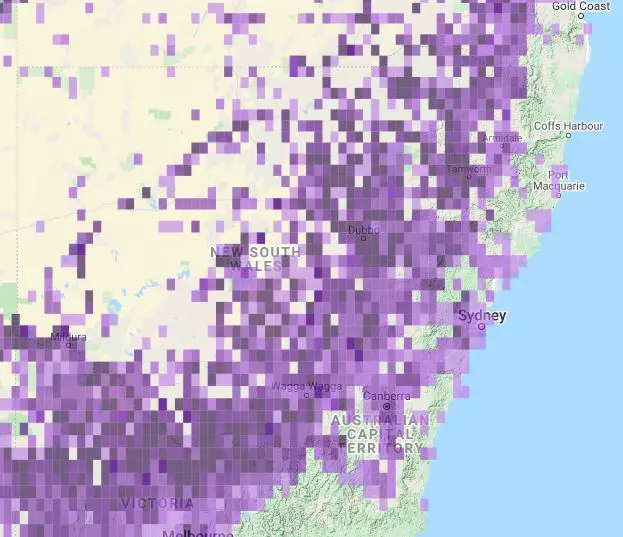
Where To Look For Them
You will find these birds on the ground in pairs or small groups, feeding on the seeds and leaves of grasses.
Look for them in the trees also as they will eat seeds, fruits, and flowers from the canopy.
What Do They Sound Like?
Listen to the Red-rumped Parrot on Xeno-Canto:

Red-rumped Parrots are one of the many species of birds that mate for life.
5. Superb Parrot
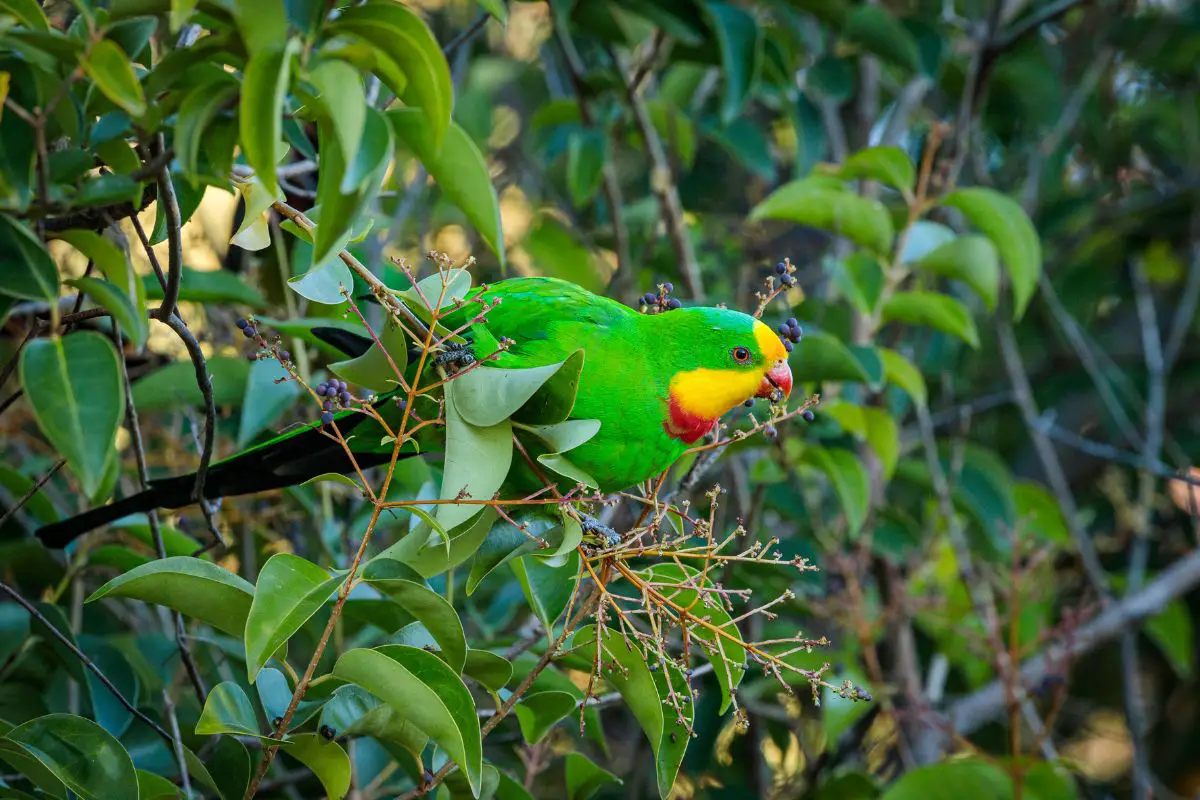
Size
The Superb Parrot is a larger bird at around 40 cm (15.7 in.) in length.
Colour
These parrots are a stunning bright green with yellow patches on the forehead, chin, and cheeks. Males also have a scarlet band across their upper chest.
Female Superb Parrots are a duller green and have red thighs and patches of pink of the inner edges of their tail feathers.
Other Names
Superb Parrots are also knowns as Barrabands, Scarlet-breasted Parrots, or Green Leeks.
Where To Find Them
These wonderful parrots are found in the southeast of New South Wales. They prefer woodlands of Red River Gum along inland rivers, especially for nesting.

Where To Look For Them
Similar to many other parrots in this article so far, Superb Parrots are ground feeders. You will also find them in the foliage of trees.
They consume seeds of grasses and plants, fruits, berries, nectar, as well as flowers, and even insects.
What place in Australia has the most birds? The answer is in this article here on my blog.
What Do They Sound Like?
Listen to the Superb Parrot on Xeno-Canto:

Male Superb Parrots often gather together into flocks of 30 birds or more, creating a brilliant sight in the sky.
6. Swift Parrot

Size
The Swift Parrot is around 25 cm (9.8 in.) in length.
Colour
Swift Parrots are a similar green to Superb Parrot but with red from forehead to the throat. They also have a blue patch on their heads and dark blue edges to their wings.
The females are, you guessed it, duller with a cream-coloured bar under their wings.

Other Names
Swift Parrots are also called Red-faced or Red-shouldered Parrots.
Where To Find Them
The map below shows how sparse the spread of the Swift Parrot is. They are listed as endangered in New South Wales.
They are mainly found in the east of the state and are more likely in and around Sydney.

Where To Look For Them
Look up to find Swift Parrots feeding in the outer canopy of flowering eucalypts. They mainly eat nectar but will also eat psyllids and lerps (crystallized honeydew produces by the larvae of psyllid bugs), seeds, and flowers.
These parrots are nomadic so if you come across some, spend some time observing them as they may be gone in as little as a few hours.
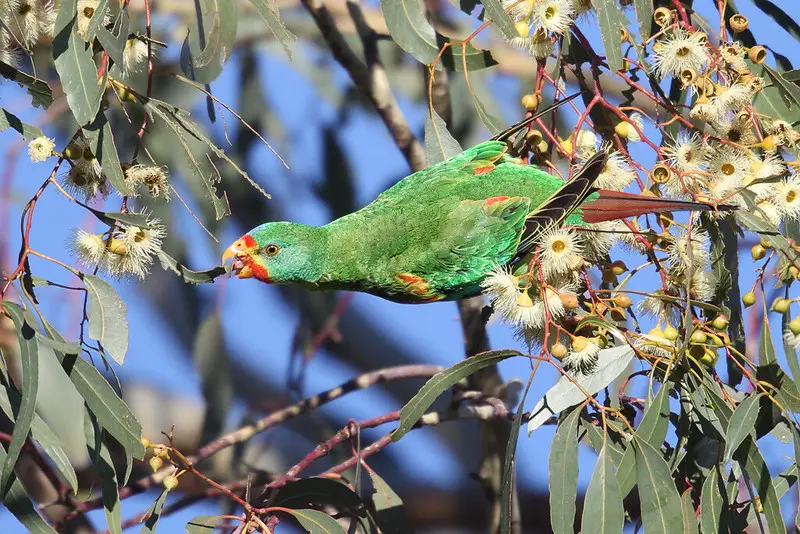
What Do They Sound Like?
Listen to the Swift Parrot on Xeno-Canto:
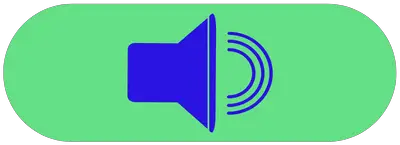

Swift Parrots will only breed in Tasmania. They then fly the 240 km across the strait to feast on flowering eucalypts on the mainland.
Meet some yellow birds of Australia in this post on my site.
7. Orange-bellied Parrot
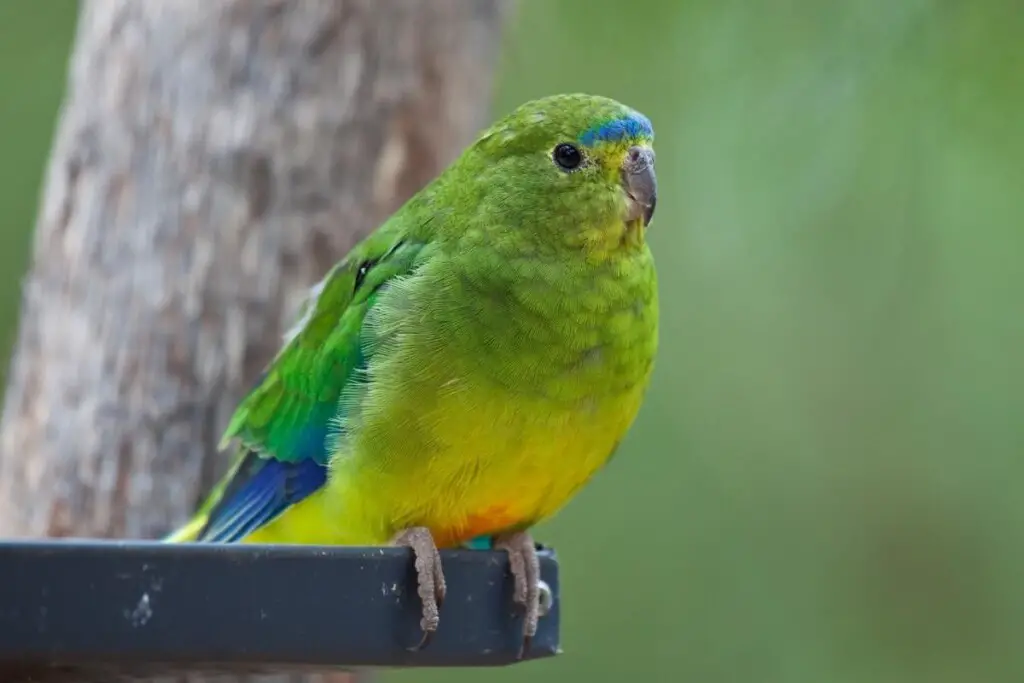
Size
The adorable Orange-bellied Parrot is about 20-21 cm (7.9-8.3 in.) in length.
Colour
Male Orange-bellied Parrots are a bright grass-green on the head, back, and the majority of their wings. Their green fades to yellow moving down their chests and turns to bright yellow moving back toward the underside of the tail.
A deep blue band spans across their forehead between the eyes and a band of similar blue decorates the outer wing feathers.
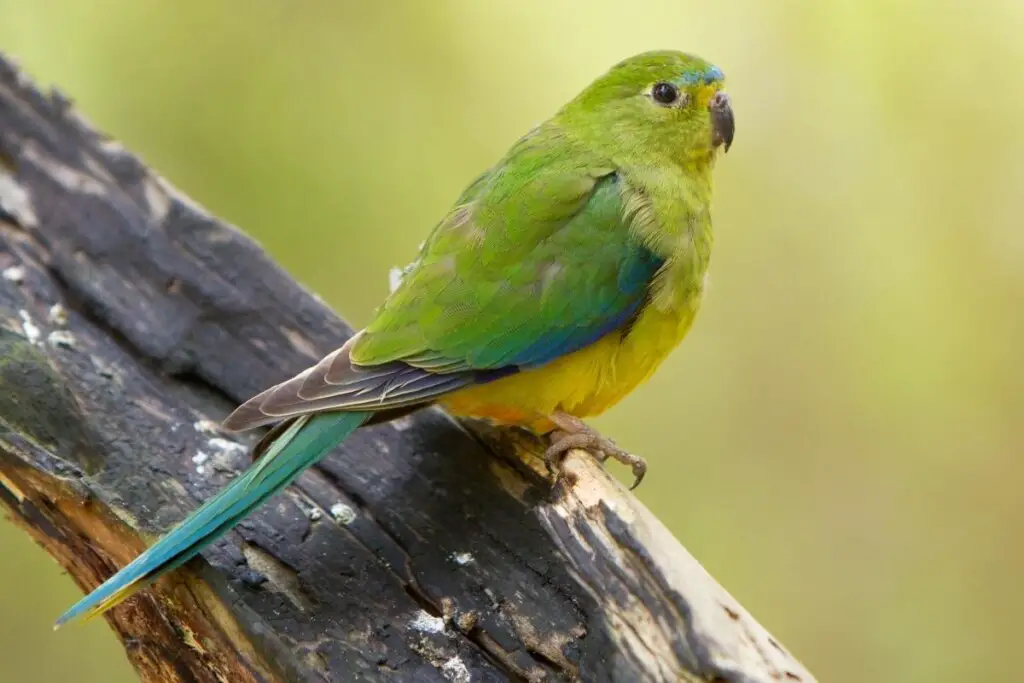
One last splash of colour can be seen on the belly in the form of a bright orange patch.
The females are duller with less blue and smaller orange belly patches.
Other Names
Orange-bellied Parrots do not seem to be known by any other name.
Where To Find Them
Orange-bellied Parrots are listed as critically endangered in New South Wales.
According to the Office of Environment and Heritage of NSW, the most recent sightings of these birds in the state were back in 2003.
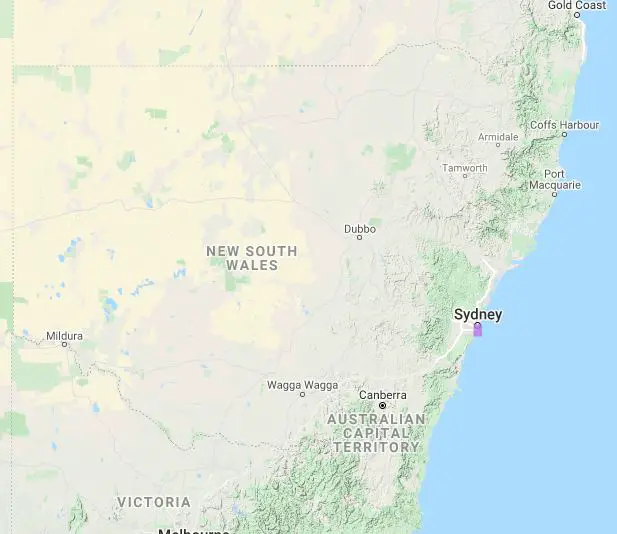
Where To Look For Them
If you are lucky enough to find one of these amazing birds, it will most likely be on the ground. They forage for seeds, fruits, flowers, and berries.
They also spend time perched on low-growing shrubs.
What Do They Sound Like?
Listen to the Orange-bellied Parrot on Xeno-Canto:

Orange-bellied Parrots are listed as endangered in South Australia and Tasmania, and critically endangered in the state of Victoria.
8. Eastern Ground Parrot

Size
The Eastern Ground Parrot is around 30 cm (11.8 in.) in length.
Colour
The grass-green colour of this parrot’s feathers, along with the black and yellow markings it has, provide it with great camouflage in grassed areas.
They also have a pale yellow wing bar and their tails are also barred with yellow.
Other Names
These unique parrots are also known as the Swamp Parrot or Button-grass Parrot.
Where To Find Them
The Eastern Ground Parrot is scattered along the east coast of New South Wales, from north of Coffs Harbour to the border with Victoria in the south.
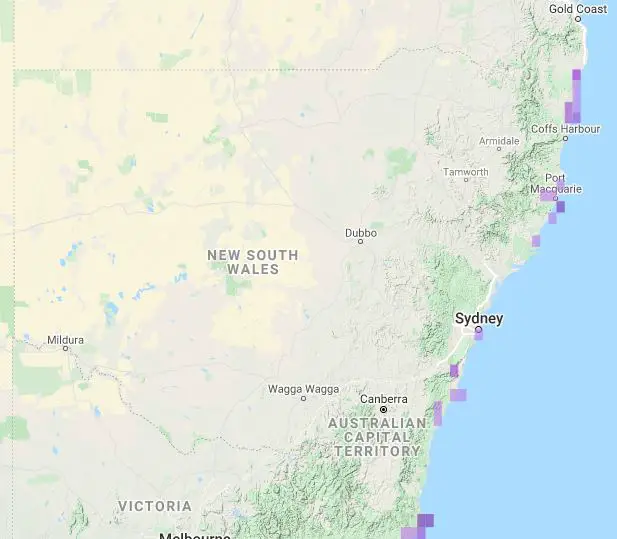
Where To Look For Them
You would be lucky to see one of these birds as they are not usually seen unless flushed from the cover of the low-growing plants they live among.
They normally stay on the ground but will occasionally climb on low shrubs or reeds to get at seeds.
What Do They Sound Like?
Listen to the Eastern Ground Parrot on Xeno-Canto:


Eastern Ground Parrots are considered to be weak fliers but the fact they are recorded high up in snow-covered areas in Tasmania may suggest otherwise.
9. Turquoise Parrot
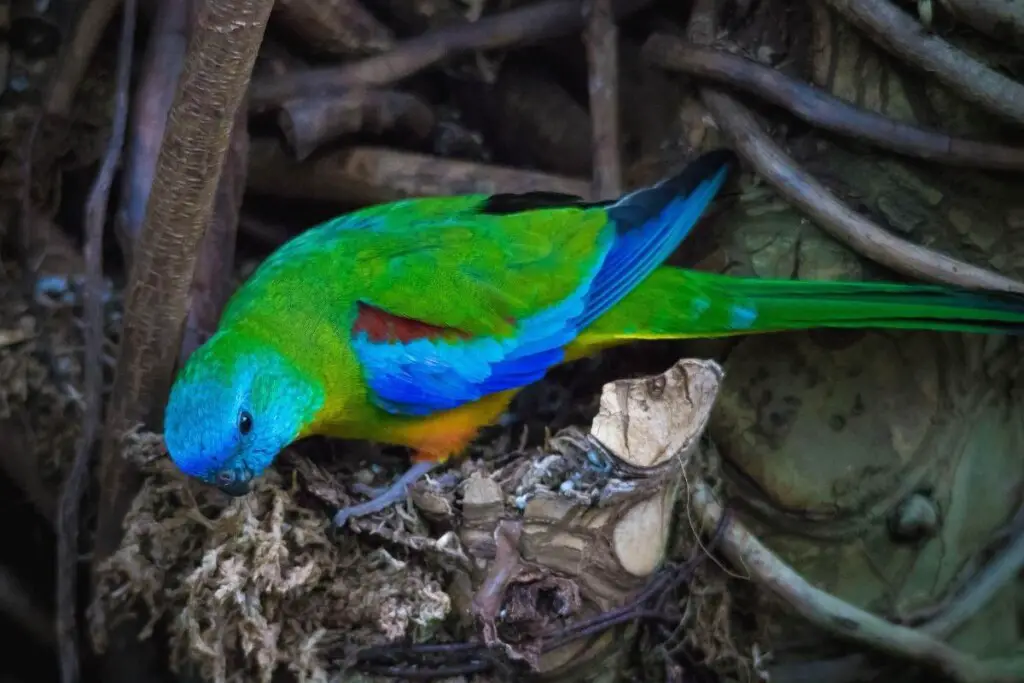
Size
Turquoise Parrots are around 20 cm (7.9 in.) long.
Colour
Male Turquoise Parrots have green upperparts and a turquoise blue face and crown. A stunning two-tone blue band stretches around the bend of the wing, highlighted by a dark red patch on the shoulder. Underneath, these birds are a rich yellow.
Females are again duller with whitish faces, no red on the wings, and a paler blue wing stripe.
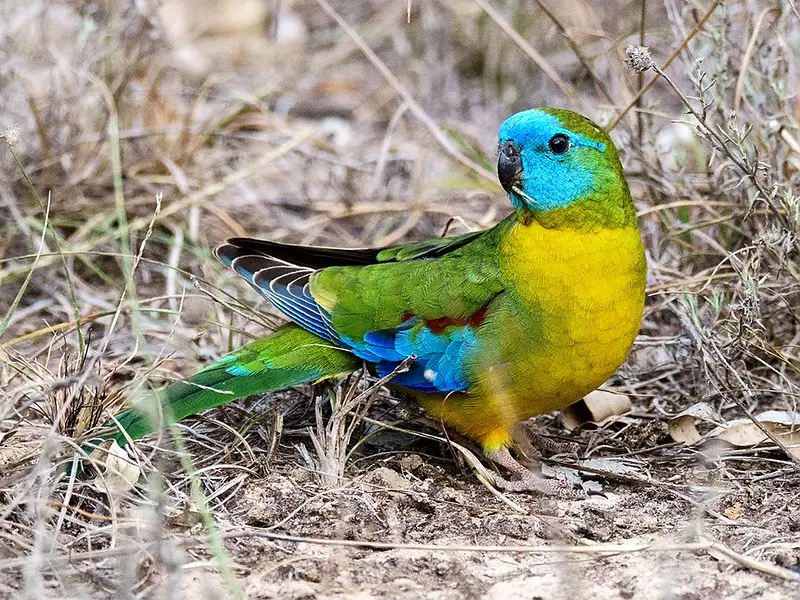
Other Names
I could not find any evidence of the Turquoise Parrot having any other names.
Where To Find Them
The range of the Turquoise Parrot extends from the Queensland border down south to the border with Victoria. They are found mostly in the east of the state.
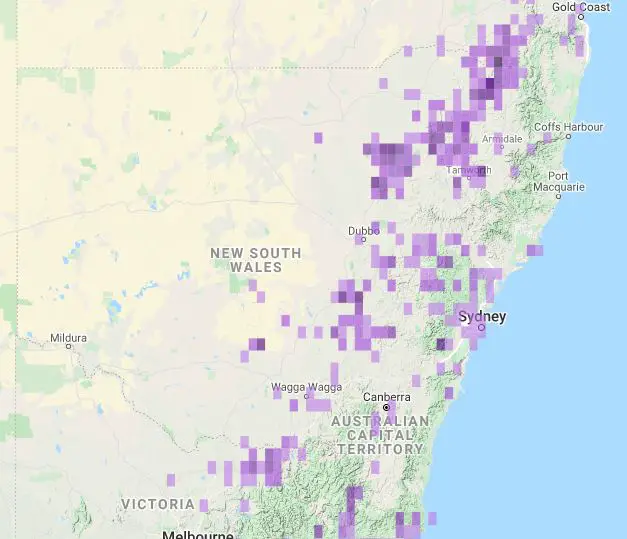
Where To Look For Them
These parrots like to forage on the ground for the seeds of grasses or shrubs. They will also eat fruit and flowers so will spend time in trees and shrubs.
What Do They Sound Like?
Listen to the Turquoise Parrot on Xeno-Canto:


The Turquoise Parrot was considered to be extinct in 1915 but its numbers bounced back over the following 20 years or more.
10. King Parrot
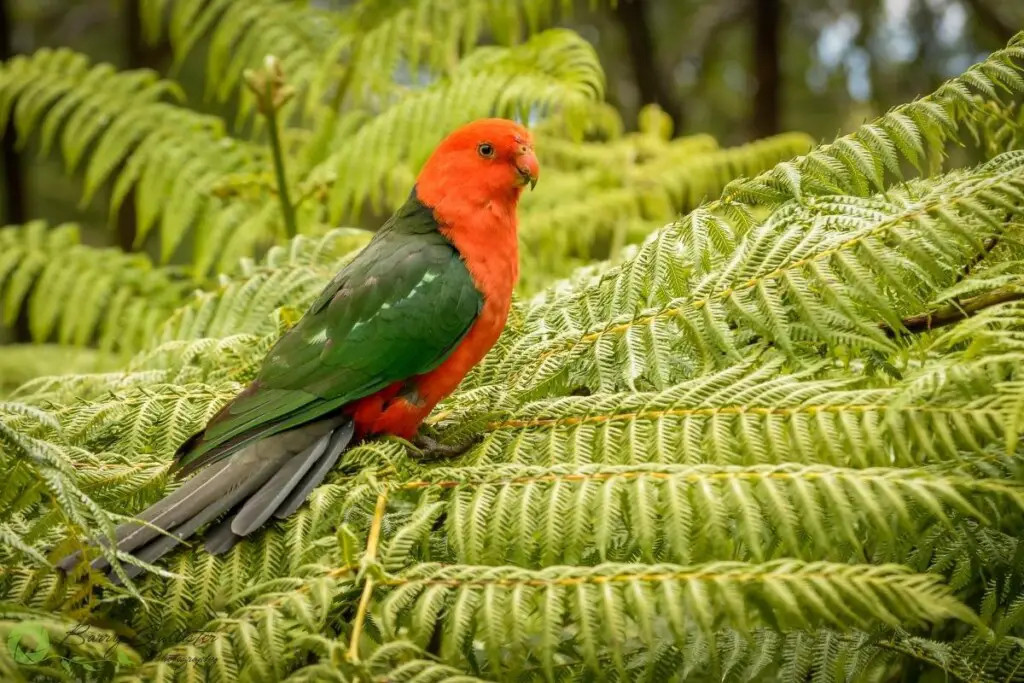
Size
King Parrots are large parrots between 42 and 43 cm (16.5-16.9 in.) in length.
Colour
The male King Parrot has a red head and belly, a green back, green wings, and a long green tail. Scattered down their shoulder are patches of lighter green.
The female King Parrot has a green head and breast.
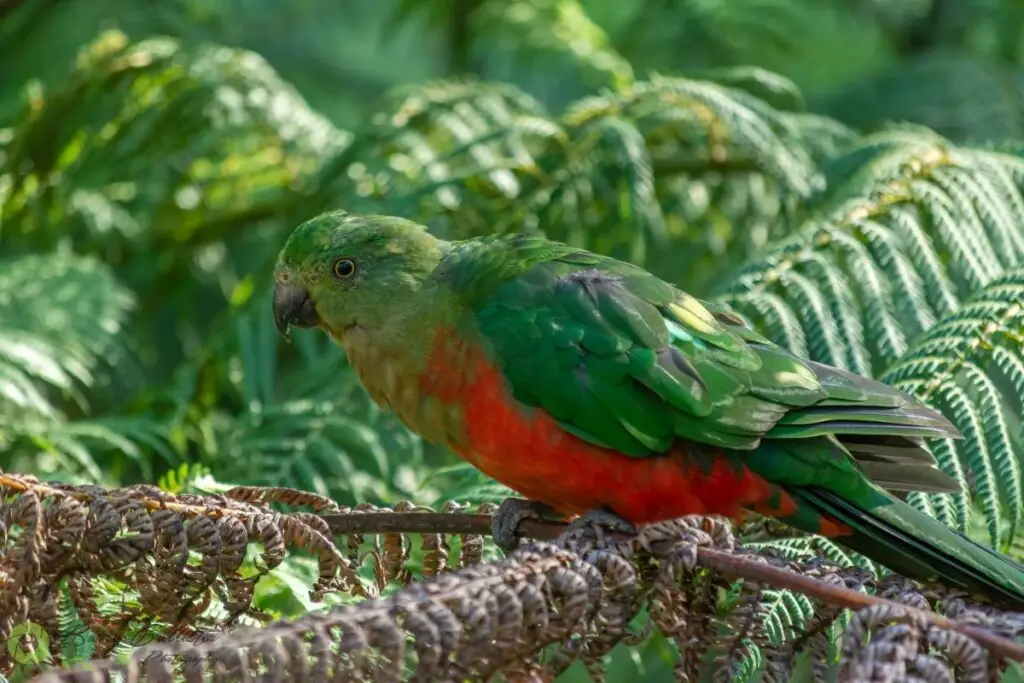
Other Names
The King Parrot is sometimes known as the Green-winged Parrot.
Where To Find Them
King Parrots are very common in the east of New South Wales. Their territory stretches from north to south.
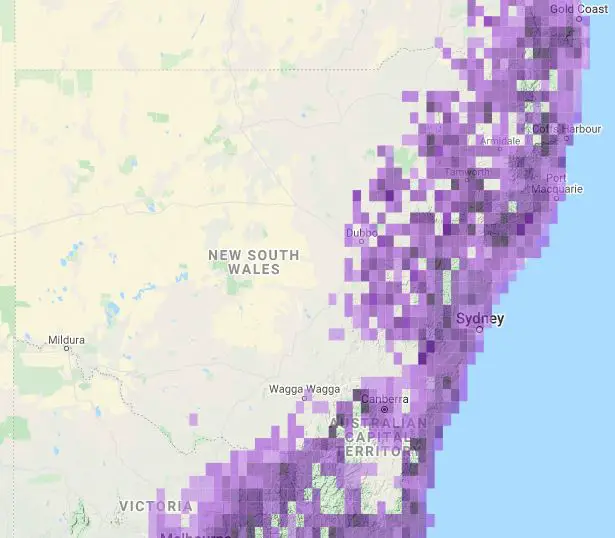
Where To Look For Them
Look for King Parrots in the trees where they will be searching for seeds and fruit.
They are common visitors to bird feeders and have a cheeky habit of hanging around homes, chirping for seed.
What Do They Sound Like?
Listen to King Parrots on Xeno-Canto:


King Parrots rarely fly above the tree canopy, preferring to weave in and out of the tree trunks under the cover of the foliage.
11. Bourke’s Parrot

Size
Bourke’s Parrots are around 19 cm (7.5 in.) long, making them one of the smaller NSW parrots.
Colour
These parrots are unique in their colouring in the world of Australian parrots. They are mostly grey-brown above with pink underparts.
They have a white eye patch and males also have a blue band on their forehead. Males also have blue on the bend of their wings, their flanks, the side of their rump, and under their tails.

Female Bourke’s Parrots are similar but duller in colour.
Other Names
The Bourke’s Parrot has a myriad of other names:
- Blue-vented Parrot
- Night Parrot
- Pink-bellied Parrot
- Sundown Parrot
- Blue-vented Parakeet
- Bourke Parakeet
- Pink-bellied Parakeet
- Bourke/Bourke’s Grass-parakeet
Where To Find Them
Bourke’s Parrots are found in arid and semi-arid areas of the far northwest of New South Wales.
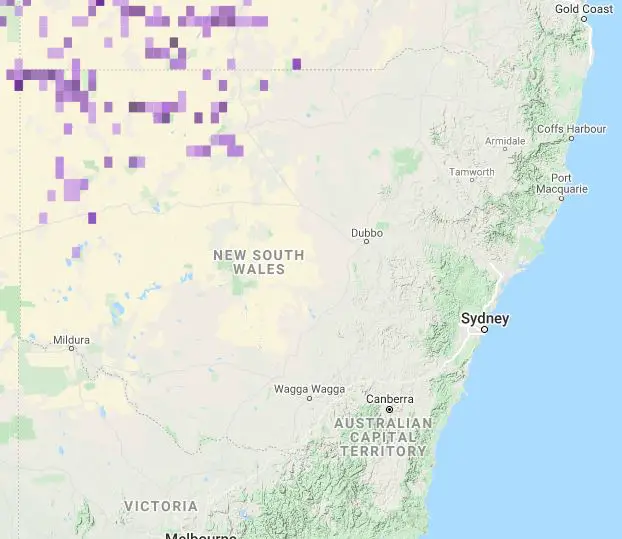
Where To Look For Them
Look for Bourke’s Parrots in pairs, or groups of up to six feeding on seeds of grasses and herbs on the ground.
As they live in very dry areas, they require a source of water so they will never be far from one. They tend to visit a water source at dawn and dusk.
What Do They Sound Like?
Listen to Bourke’s Parrots on Xeno-Canto:


Bourke’s Parrots are nomadic and will often remain in one place for a number of years and then just disappear.
12. Blue-winged Parrot
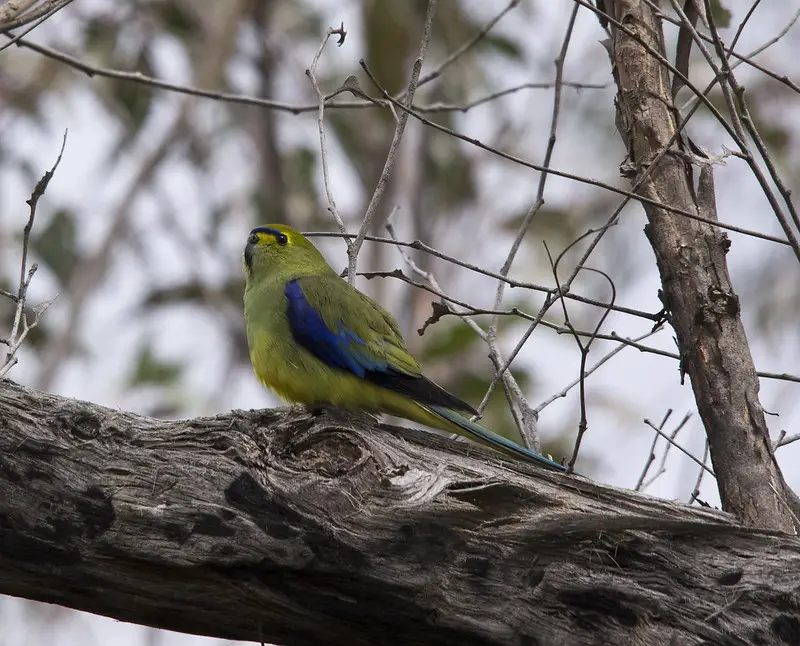
Size
The Blue-winged Parrot is around 20-21 cm (7.9-8.3 in.) in length.
Colour
These birds are another very colourful parrot of NSW. They have an olive-green head and upper body and yellow bellies which may have orange in the centre.
They have a dark blue band that runs across their forehead from eye to eye that is underscored by a yellow stripe. There is also some yellow around the eye.
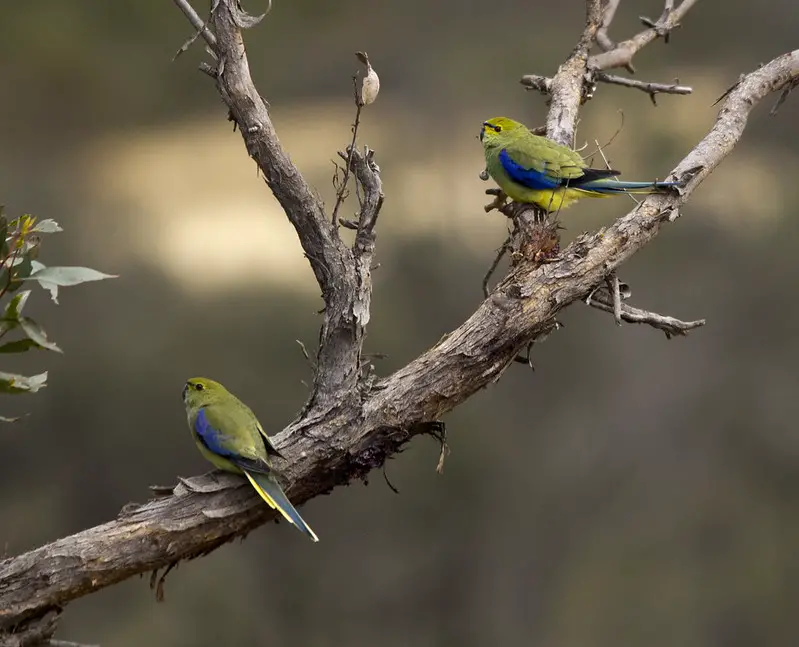
As their name suggests, they also have a blue patch on their wings.
Female Blue-winged Parrots are like the males only more muted in colour.
Other Names
Blue-winged Parrots are another bird that is known by many names:
- Blue-banded Parrot
- Grass Parrot
- Blue-banded or Hobart Grass Parrot
- Blue-banded Parakeet
- Blue-winged or Grass-Parakeet
Where To Find Them
The Blue-winged Parrot is fairly sparsely distributed across western New South Wales.
As you can see from the map, however, they have been spotted as far east as Sydney.

Where To Look For Them
Look for these beautiful birds foraging on the ground for seeds of grasses and herbs.
What Do They Sound Like?
Listen to Blue-winged Parrots on Xeno-Canto:


Aside from the fact that they breed in Tasmania, Blue-winged Parrot movements are still relatively a mystery to researchers.
References
- Birds Of The World – The Cornell Lab of Ornithology
- Birdlife Australia
